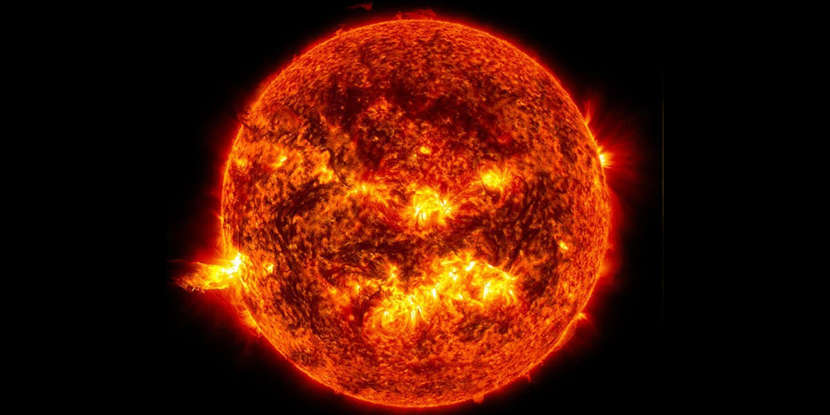The sun is getting more active than it has for a decade — and it could lead to power outages, grounded flights, and stunning auroras
- The sun is entering a period of peak activity that will last several years, an expert said.
- This means the sun will produce more solar flares, powerful bursts of energy.
- Solar flares can disrupt radio communications and electric power grids on Earth.
The sun is waking up after almost a decade of relative calm, scientists say — and that could cause problems on Earth.
As more sunspots appear on the surface of our star during its active period, it may prompt more solar storms, creating bursts of electromagnetic energy that can affect everything from the power grid to GPS signals.
These so-called solar maximums occur roughly every 11 years, and they haven’t been much of a problem in the past.
Scientists, however, fear that our reliance on electricity and interconnectivity could mean we’re far more vulnerable to their effects this time around.
The sun’s poles are flipping
The sun is a big ball of plasma, heated at its center. The plasma, which is made of charged particles, boils toward the surface, cools down, and sinks back toward the core again.
That motion, called convection, is what creates strong magnetic fields at the poles and smaller, local magnetic fields at the surface of the sun.
Every 11 years or so, the sun becomes “convectively unstable,” meaning its magnetic fields become so unstable that the magnetic north and south poles abruptly flip, throwing our star’s polarity out of whack, said Mathew Owens, a professor of space physics at the University of Reading.
That instability causes havoc in the magnetic fields at the surface of the sun, which become much more active. That’s when the solar maximum happens.
We’ll see more sunspots and they might get bigger
As the magnetic fields become more confused, bigger sun spots can appear on the surface of the sun.
“We’re already seeing a lot more big sunspots,” Owens said in late February. “There’s a few this last week or so that were visible to the naked eye,” he said, though he cautioned you shouldn’t look straight to the sun which can damage your eyes, and only see these through strong filters.
He wasn’t wrong. A huge “hole” the size of 30 Earths, pictured above, was spotted on the sun by NASA’s Solar Dynamics Observatory on Monday.
Solar storms could ground planes
The sun is much more likely to throw energy our way during its maxima.
As the sun’s local magnetic fields get more tangled and crash into each other, they can explode. Energy and charged particles from the sun are then ejected into space.
That energy can affect communication by messing with the ionosphere, a layer of charged particles in our upper atmosphere. That could cause problems for air travel.
“Space weather can ground flights,” Owens said, adding that the Federal Aviation Administration “won’t allow flights if they don’t have both radio and satellite communications.”
A 2023 study looking at flight records over 22 years found that planes were 21% more likely to be delayed by at least 30 minutes when the sun was very active.
The rays can change the magnetic fields in the ionosphere, which can affect GPS signals that have to pierce through that layer to reach Earth.
Radio signals sent from Earth also need to bounce off the ionosphere to get from one point to the other — that’s less efficient in rough space weather.
Granted, radio signals are much less important to basic communications today. But several industries use radio signals to back up their other communications systems in case of failure.
There may be power outages
As the geomagnetic storm messes with the ionosphere’s magnetic charge, it creates currents in the ionosphere. Those currents in our upper atmosphere interact with the particles in the ground. The interaction between these particles creates strong electrical currents that can flood infrastructure on Earth.
This can trigger some bizarre phenomena. In one example, in 1972, US military pilots flying south of Haiphong harbor in North Vietnam saw two dozen sea mines explode in the water without any apparent cause. A 2018 study looking at space weather at the time concluded that the cause was a huge solar storm.
If the currents flood the electrical grid, they can blow up transformers.
One damaged transformer won’t cause much of an issue. But a huge geomagnetic storm heading toward Earth — a storm so big it would “probably give us aurora down to the equators” — could cause several transformers to go at once, or overwhelm other transformers that could then blow up, knocking out the whole grid, Owens said.
In that case, Owens said, restarting the grid “could be a matter of weeks or even months.”
“Then you lose refrigeration, you lose power to hospitals — things get quite serious quite rapidly,” Owens added.
So far, we’ve been lucky. The worst solar storm we’ve seen happened in 1859. But we didn’t rely as much on electricity back then as we do now; the only thing it knocked out were telegraph lines.
Still, a space-weather event in 1989 shows just how vulnerable we’ve become: A huge geomagnetic storm on March 13 cut power for 6 million people in Quebec for nine hours.
READ MORE HERE
Share This Story, Choose Your Platform!
One Comment
Comments are closed.





































So your saying it’s time for hf users to get excited?